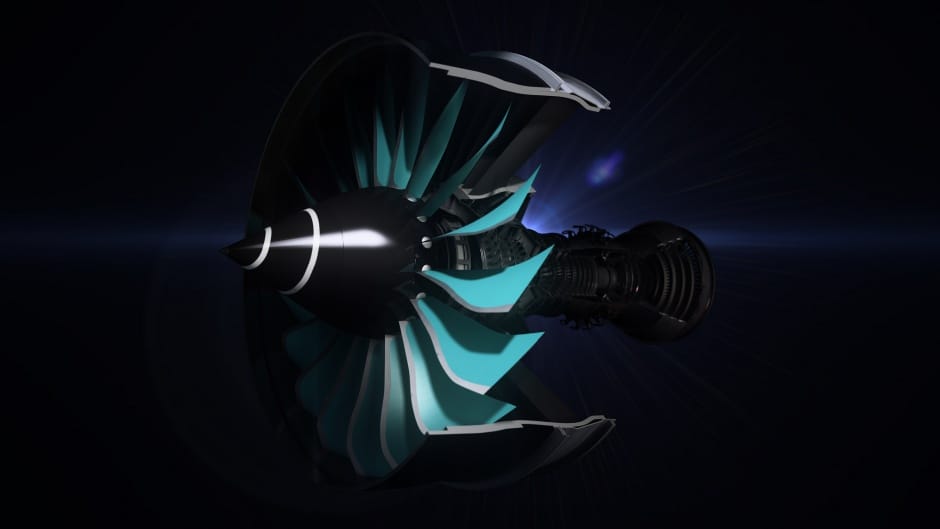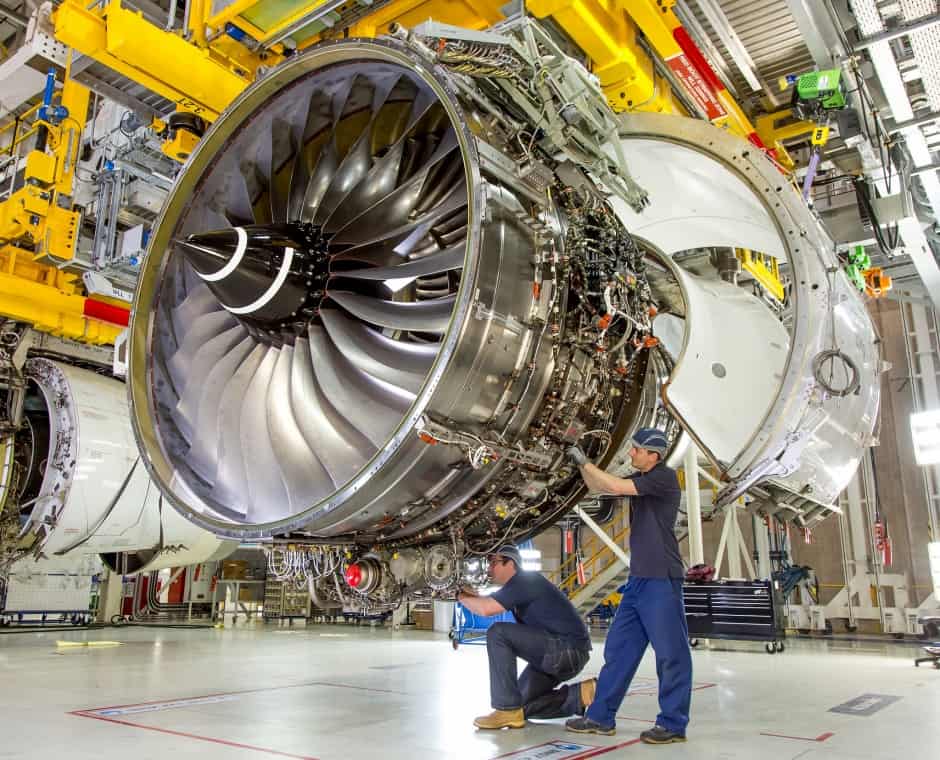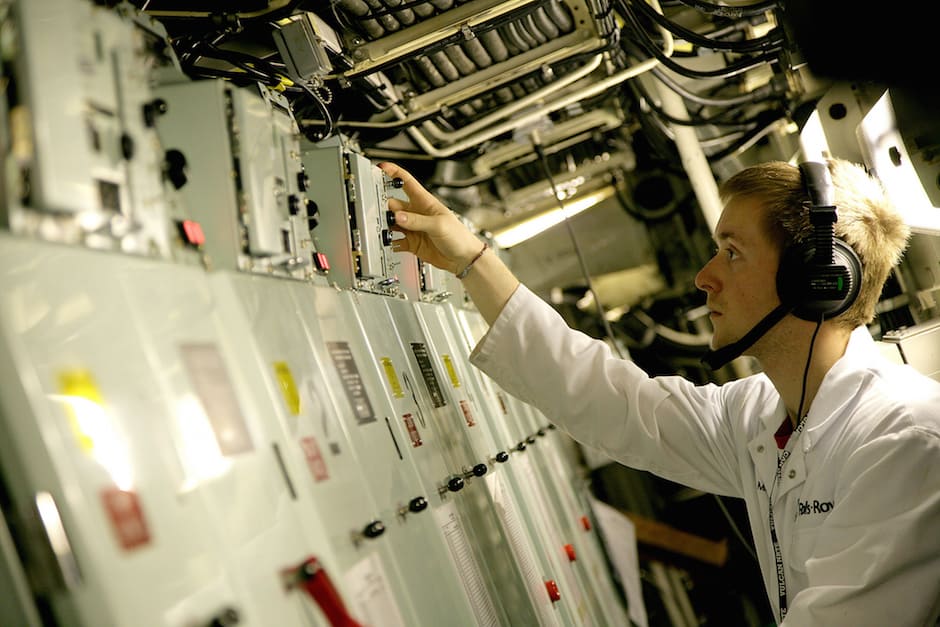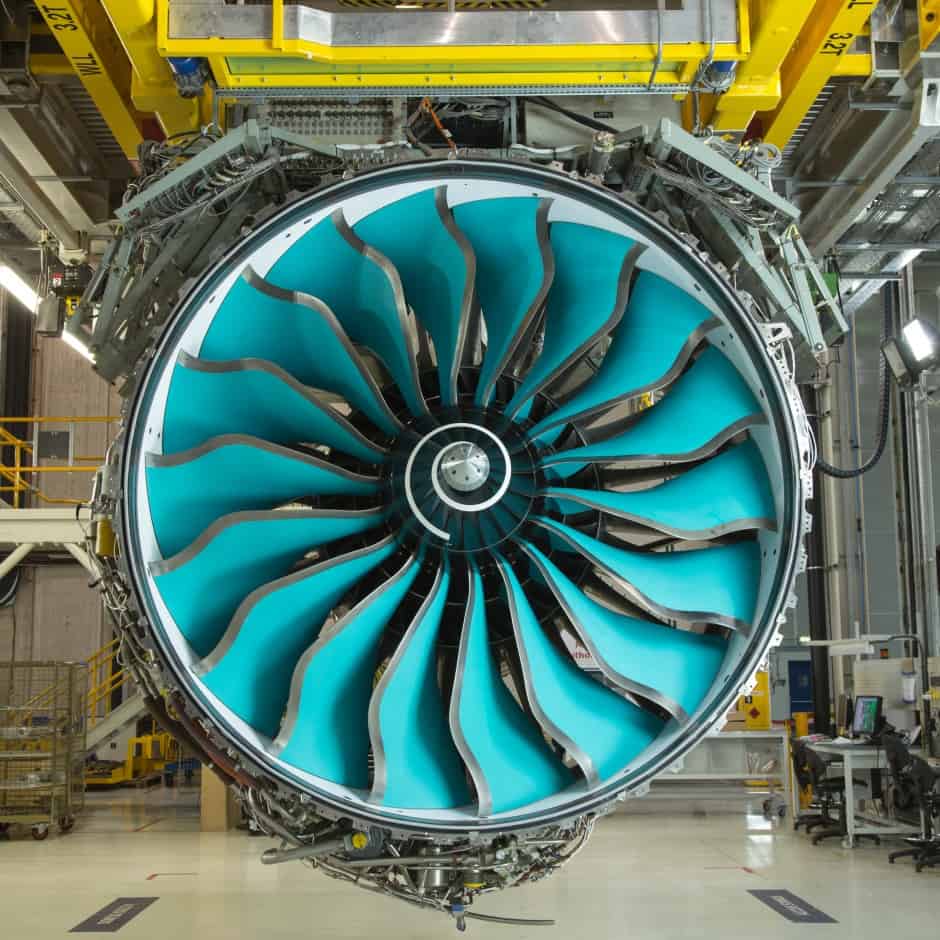When Rolls-Royce’s next generation jet engine, the UltraFan, enters service, a global network of university researchers will share the credit.

To pick just one component, the steel shaft on the UltraFan owes much to materials research done in Cambridge University. Indeed, such is the academics’ contribution that Mark Jefferies, the company’s Chief of University Research Liaison, says that it would be hard to pin down areas in the new engine where academics didn’t play a role. “A lot of our tools, our analysis codes, most of CFD [computational fluid dynamics], were initially created and continue to be developed in collaboration between our own engineers and the academics.”
The academics behind the technology work in a series of University Technology Centres (UTC) that Rolls-Royce has assembled to research key technologies. The centres have made important contributions across a number of areas. For instance, they contributed greatly to the materials used in today’s products with researchers at Swansea University, for example, working on the exotic hot-end titanium and nickel alloys throughout the firm’s Trent engines.
The company’s relationships with the materials UTCs have also evolved. In 2009, for example, it brought Swansea and Birmingham together, along with Cambridge's materials group, to create the Rolls-Royce University Technology Partnership (UTP) in materials research.
The members of the UTP have complementary expertise, with Cambridge focussing on what Jefferies terms the “hot-end alloys”. Birmingham concentrating on “titanium alloys at the front of the engine” and Swansea conducting research into material properties.

But materials are just one of many domains for the UTCs. Other centres cover topics including aerodynamics, mechanical aspects, electronics and controls. Cambridge, one of a handful of universities with two UTCs, also houses the University Gas Turbine Partnership, one of the first such centres.
Rolls-Royce created the first UTCs in the early 1990s when Philip Ruffles, then Director of Engineering at the company, found that it was sponsoring many small projects in many universities. He concluded that it made sense to concentrate on bigger contracts with a small number of groups.
The programme began with a handful of centres, but the roster has since grown to 31, with nearly two thirds in the UK and others in Europe, the USA and Asia. One of the newest, set up in 2014, has Virginia Tech and the University of Virginia working on advanced systems diagnostics, flow modelling and power electronics.
One of the keys to the success of the program is the way in which it is structured to encourage long-term relationships, and gives academics and Rolls-Royce’s technical staff time to become comfortable working together. “For these things to be effective there has to be a true partnership,” said Dr Howard Stone, deputy director of the Cambridge materials UTC. “Partnerships based on experience and trust. This puts both parties in a unique position. The technical staff in Rolls-Royce are able to look at the university network and know who can assist with any particular problem, issue or opportunity.”
The UTCs also play an important role in training and recruitment
Size is also important. Each centre is big enough to cover an area in depth. Cambridge’s material UTC alone, has around eight academics along with six post docs and about 20 PhDs students, whilst the materials department in which it sits has a total of around 150 PhD students.
The Department of Engineering at Cambridge also houses the University Gas Turbine Partnership, which, with over 85 staff and graduate students, is even bigger than the materials UTC.
Additionally, the UTCs play an important role in training and recruitment. Since it was formed, the UTP alone has trained about 170 new PhDs, and Jefferies said that around half of all the PhD graduates from the UTCs maintain links with Rolls-Royce. About a quarter of the people who earn PhDs at a UTC join the company. A further third remain on the academic side. Even PhD graduates who go elsewhere may end up working in the company’s supply chain or with a customer. “It is an effective way of training people in the challenges that are relevant to our industry,” he said.

The centres also give Rolls-Royce access to expensive scientific tools. Jefferies lists such equipment as X-ray diffraction machines as well as high-performance computing. “We need access only occasionally. So it makes sense for academics to use that equipment. They are using it all the time.”
The UTCs may be important to Rolls-Royce, but they consume a small part of the company’s £1.2 billion a year R&D budget. After all this is frontiers research rather than the very expensive development programmes that take most of the budget. Jefferies won’t say how much the company invests in UTCs, although he doesn’t demur when asked if it is “tens of millions”.
You put 10 people in and you get 100 people’s worth of activity out.
But it isn't just money that Rolls-Royce puts into the UTCs. There is also considerable input from the company’s engineers. This is an important part of the success of the UTCs, said the firm’s CEO Warren East: “You put 10 people in and you get 100 people’s worth of activity out. The danger where perhaps people fail is that they think they are going to get a hundred people out for putting two people in.”
Jefferies agreed that “the more effort you put into relationships the more you get out. That is obviously a cost to our business,” he added. “I prefer to consider it as an investment.” After all, he points out, if you include support staff and PhD students, “there are probably about 1000 people within our UTC network”. A good number of engineers inside the company are also involved in the UTCs. As Neil Glover, head of materials at Rolls-Royce puts it “We have a team of internal specialists who own and direct the technology programs within their domain.”
One role for the company’s specialists is to ensure that the academics know where engineering is going within Rolls-Royce. In January, senior engineers from within the company and the UTCs met for their annual get together. These events, along with specialist meetings, are a chance to update the UTCs on the major challenges ahead so that the academics can come up with ideas as to how research could help to solve them.

“We can set the challenges and the goals that we are trying to deal with over the five, 10, 20-year horizon and leave clever people to think about how we might address those challenges,” said Jefferies.
“We expect our senior academic colleagues to challenge us back and say have you thought about, or have you considered these types of technology that are coming over the horizon?”
Planning for the future in this way can mean casting the net wider to bring in new disciplines. “We need computational scientists for example,” said Jefferies. “It is not just engineering. We are entering a much more digital world. There is much more virtual design, much more analysis and understanding of data. You can generate a lot of data but you need to be able to understand and interpret that data.”
So the company has to adapt the UTC network to bring in new skills. “We need to find those who are excellent and who are able to work in this collaborative environment.”





Red Bull makes hydrogen fuel cell play with AVL
Formula 1 is an anachronistic anomaly where its only cutting edge is in engine development. The rules prohibit any real innovation and there would be...